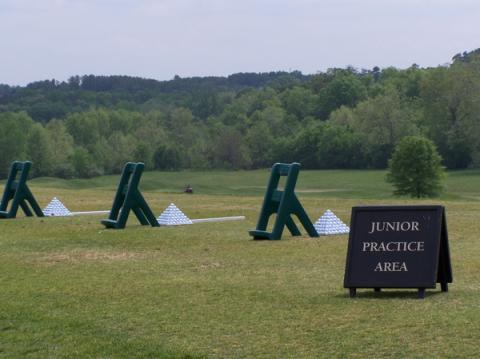
The Glenmore Country Club, in Keswick, VA, puts strong emphasis on its junior program, knowing that is one path to membership stability.
A column in today's Wall Street Journal by John Paul Newport reemphasizes a point we have made in this space before about financial issues private golf clubs are facing. In a recession, many of them do not have much room to maneuver. Members are leaving faster than new ones are joining. These country clubs have a number of options to staunch the income flow, some potentially self-defeating.
The simplest approach is to deeply discount entrance fees for a period of
Other actions are equally daunting and chip away at the very nature of a "private" club. One option is to accept more group outings to generate needed supplemental income, in effect shutting off play to members one or two days a week, typically Monday and Tuesday. This is always a grousing point at private clubs. Another, more radical measure, is to turn the private course public Monday through Thursday or Friday, permitting outside play for substantial daily fees but reserving a block of times for members. Some golf courses in resort areas of the southern U.S. use such an approach, but make no mistake about it, these clubs feel more "semi-" than they do "private." And those interlopers, some of whom pick up a golf club once a year, at the company outing, tend to chew up the golf course.
There are some less invasive remedies club membership committees should investigate. These are built
My wife does not play golf, but she did pay for and attend a few aerobics classes at our club that were conducted by an outside trainer. If our club, which does not have a fitness center, sponsored something like that, it might engage more non-golfing spouses. This becomes especially important when a son or daughter goes off to college or the family buys a vacation home for use during the summer. If dad is the only one who uses the facilities for a few weeks in spring and fall, then his mental calculator starts to spit out a tough-to-justify number like $400 per round played (that is what I paid last year). That is always a danger sign for private clubs, especially in the current economy. (Note: After 22 years at our Connecticut club, we have made the tough decision to give up our membership.)
But, perhaps, the best way to keep families from bolting is through junior golf programs. What parents who can scrape out dues payments are going to deny their sons and daughters the opportunity to continue in an active club program for juniors? Some clubs recognize this and throw a lot of resources at their junior programs. The club in the golf community of Glenmore, near Charlottesville, VA, even carves out a separate practice area for its juniors. Other clubs consider junior programs more or less an afterthought, running the occasional group clinic, arranging a few play dates for the kids but also restricting tee times for the youngest children to an unreasonably few hours a week. Substantial investments and a focus on well-run junior programs can pay off in the short run by stemming member flight, but also can begin to sow the seeds for intermediate memberships later, after some of those juniors who were cultivated in their teens finish college and return to live and work near where they grew up.
Most families average four members. If the carrying costs for club membership are, say, $6,000 per year, and all four members are engaged in activities at the club, then the pro rata is $1,500. If dad plays golf and no one else is engaged, then that $6,000 looks unjustifiable. Less is more for private clubs in today's economy.
Click here for the Wall Street Journal story (it may require a subscription; if so, email me and I will forward it to you.)



